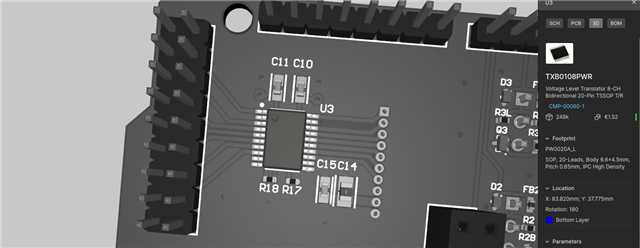Hi,
We built a nrf52840dk shield that interfaces with an SPI sensor connecting to GPIO_IF4. We require using a voltage translator to translate 3.3V signals into 5V to comunicate with the sensor, because of the rest of our design requires using this 5v source.
We are setting the output voltage from REG0 regulator stage to 3.3V. Somehow the voltage translator is messing up the SPI communication. If we remove the voltage translator the SPI communication at 3v (the sensor also supports it, even though we cannot use it in our design), it works as expected.
Also, we tested using an ESP32-S3 dev board with the same shield to comunnicate with the SPI slave/sensor and the communication worked correctly.
Also, we cut the solder bridges SB10...SPB15 and soldered SB20...SB25 so we do not use the qspi external flash memory.
Looking at the schematic do you see any reason why this specific voltage translator wouldn't work with the DK for SPI signals, but works with ESP32 just fine ?
Follows in attachment the altium files of our shield.
Thanks in advance for any support.
Best regards,
Pedro Machado


